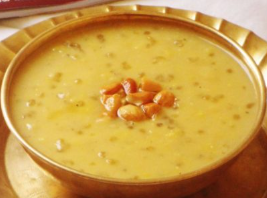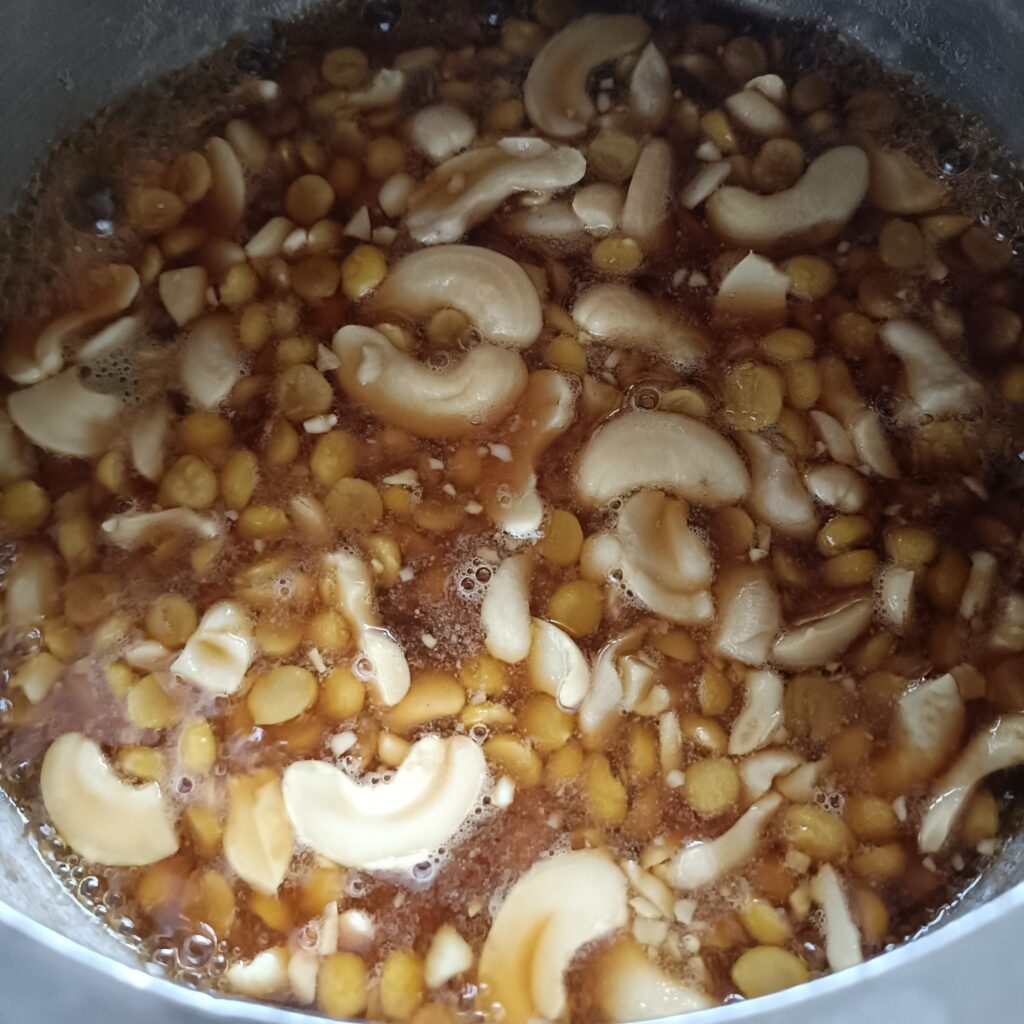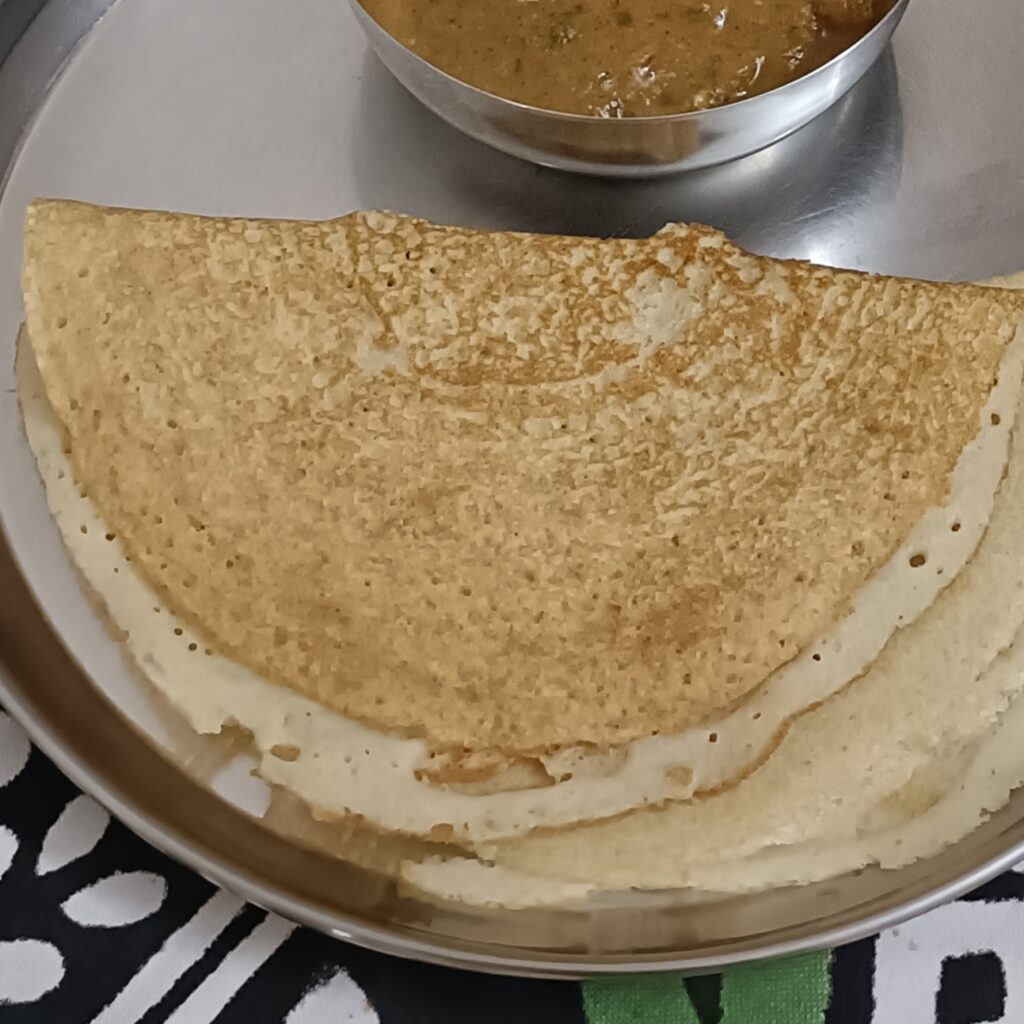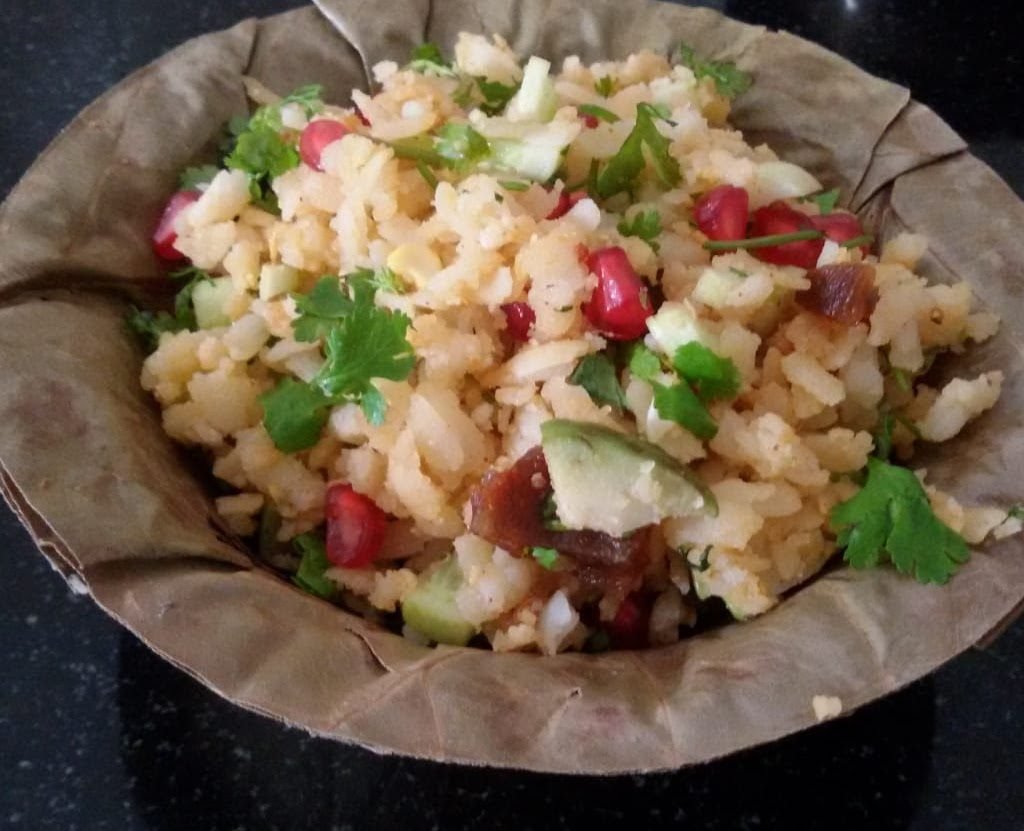
Gul Pohe (Pressed Rice in Jaggery and Coconut)
Poha is made by soaking the rice and then flattening and drying it. It can be considered to be an uncooked form of rice yet doesn’t really need to be cooked to be consumed. It has a reasonable amount of carbohydrates, some potassium, sodium and protein, and is easily digested.
Coconuts have been grown in India for centuries and have traditionally been used in both savoury and sweet dishes. Coconuts are considered a source of healthy fat, but the fat will add up if they are consumed in the form of coconut milk or oil. Also, they contain small amounts of saturated fats and so should be eaten in smaller quantities. Eaten grated or in pieces, they are a great source of fibre and so help digest the fat in them more easily and also keep the quantity consumed lower. The fat in coconuts is easier for the human body to digest and they don’t contain cholesterol like animal fats Coconut also contains iron, manganese, copper and magnesium, which aid in protecting against disease and ease inflammation in the body.







